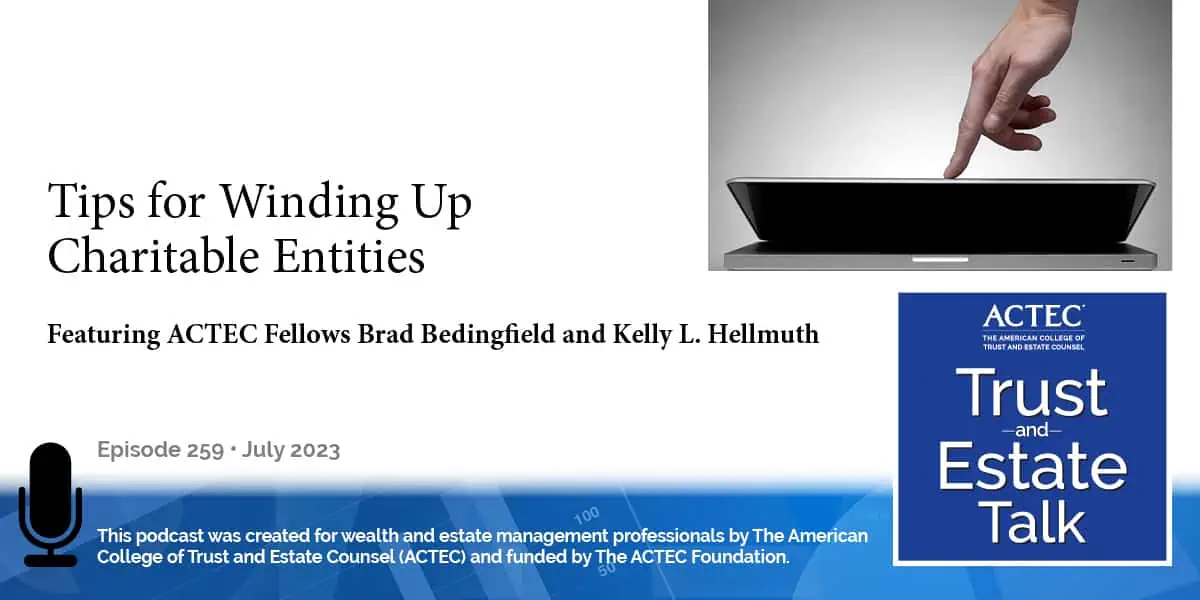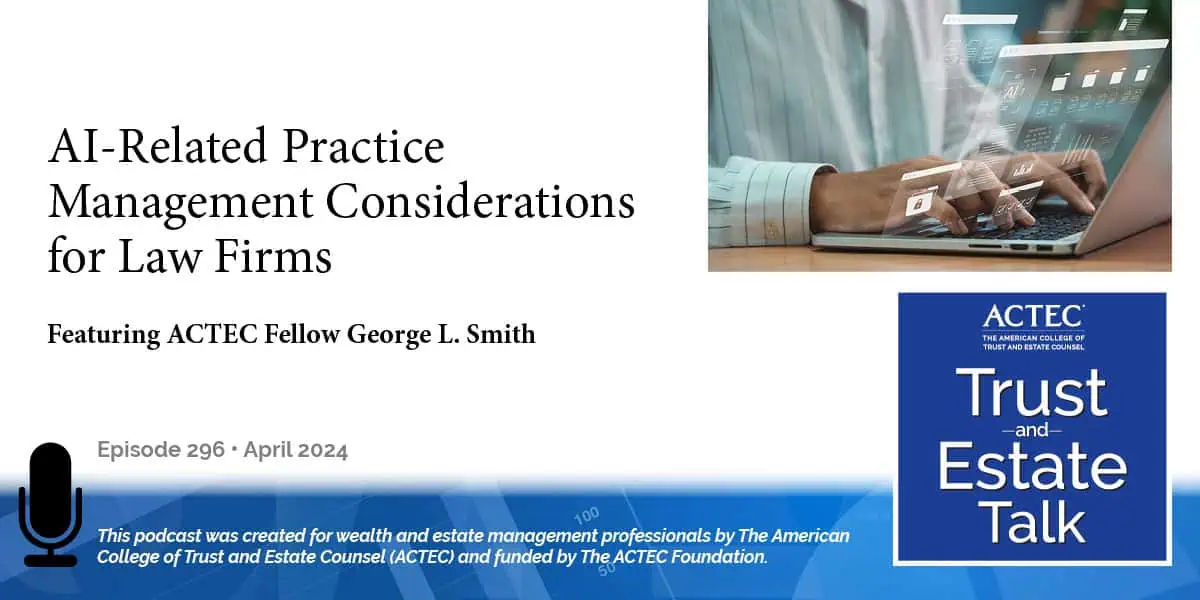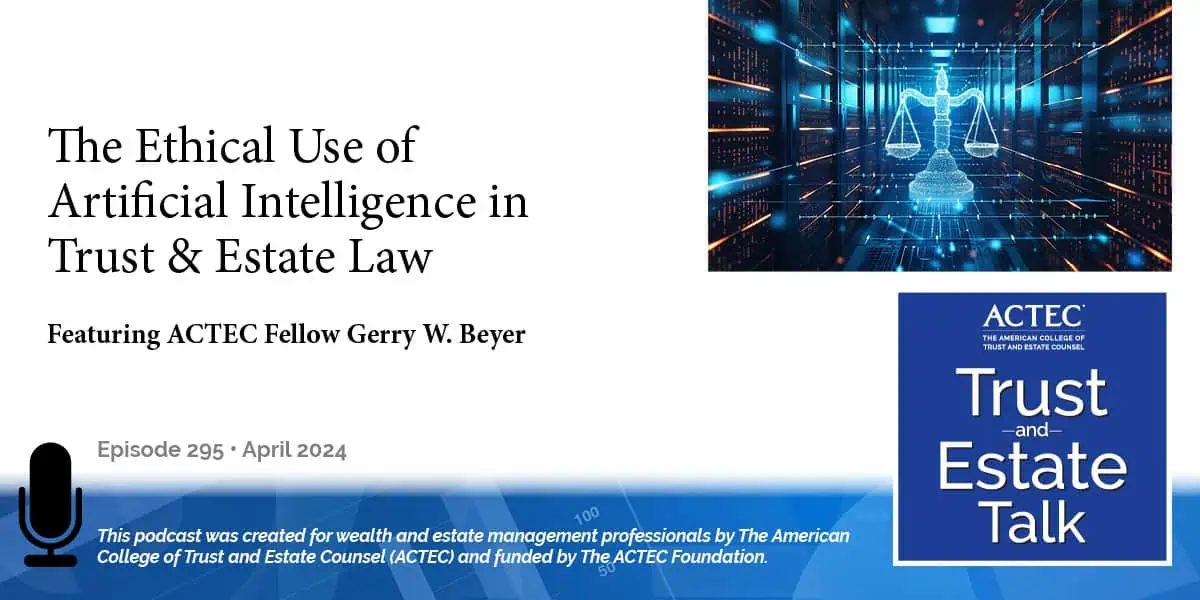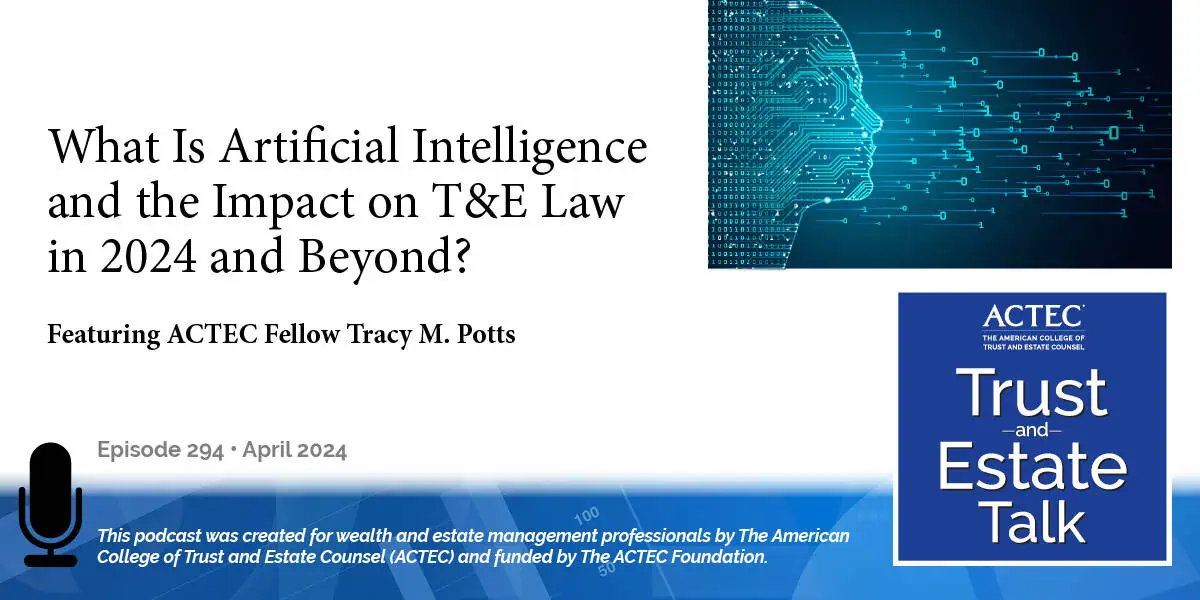Tips for Winding Up Charitable Entities

“Tips for Winding Up Charitable Entities;” that’s the subject of today’s ACTEC Trust and Estate Talk.
Transcript/Show Notes
This is Alvi Aggarwal, ACTEC Fellow from Fairfax, Virginia. Many estate planning clients are highly philanthropic and set up private foundations, supporting organizations, Donor Advised Funds (DAF), public charities, and other vehicles to sustain their charitable planning goals. But what happens when those vehicles become non-viable following the death of a founder or because those in control feel the compliance requirements or risk involved is no longer worth it? ACTEC Fellows Brad Bedingfield of Boston, Massachusetts and Kelly Hellmuth of Jacksonville, Florida, are here to offer tips for winding down charitable entities. Welcome, Brad and Kelly.
Philanthropy in Estate Planning
Brad Bedingfield: Today, our clients use a variety of philanthropic vehicles, often several working in conjunction. The more vehicles people use, the more frequently some of those eventually will need to be shut down. There are many reasons why clients may need or want to shut down philanthropic vehicles, including changes in mission focus, cost, complexity, lack of ongoing commitment, and family dynamics. In unusual situations, philanthropic vehicles may be shut down involuntarily by the IRS, by Attorneys General, or as part of bankruptcy proceedings. Whether voluntary or involuntary, there are a number of considerations that must be taken into account when winding up charitable entities and the cost of doing it incorrectly could be severe.
Private Foundation Termination Options
Kelly Hellmuth: Private foundations usually present the greatest tax complexity when winding up, in part because of the rules of Section 507 of the Internal Revenue Code, which contains the exhaustive list of the options for terminating an organization’s tax status as a private foundation. Under Section 507, a foundation may use any of four different options:
- be involuntarily terminated by the IRS,
- voluntarily terminate by notifying the IRS and paying a termination tax,
- convert to a public charity over a 60-month period, or
- terminate by transferring all assets to certain public charities that have been in existence for at least five years.
An organization that has not done one of these things continues to be treated as a private foundation for tax purposes, even if, for example, the organization’s tax-exempt status is automatically revoked for failure to file its annual returns for three consecutive years. The most common method of terminating private foundation status is to terminate voluntarily. To use this method, the foundation must send a notice to the IRS stating that it is terminating that status and providing a calculation of the termination tax. In practice, except in very rare instances, this should only be done after the foundation is certain that it has no remaining assets, and in that case, the tax will be zero.
Otherwise, the termination tax could be as high as 100% of the foundation’s assets. Note that simply marking the box that says “final return” on the form 990PF does not suffice. Rather, notice should be sent by a separate letter to the IRS. Once the notice has been provided and any tax paid, the entity is no longer subject to the Chapter 42 taxes and is instead a taxable entity. This is true unless and until the entity does something to again make the private foundation rules apply. For example, if anyone claims a tax deduction for a contribution to the entity, that would trigger section 4947(a)(1) and reapplication of the private foundation tax rules.
Winding Down Private Foundations: Reorganize as Public Charity
Brad Bedingfield: The third method we mentioned, terminating private foundation status by reorganizing as a public charity, is a five-year process. It begins by filing a notice with the IRS using form 8940 to let the IRS know that the foundation will begin a 60-month transition period as of the first day of the foundation’s tax year, beginning after the notice is filed. The foundation may, at that time, request an advanced ruling that it will satisfy the requirements to qualify as a public charity over the five-year period, which can be helpful in fundraising and for other reasons.
At the end of the five-year period, the foundation must file another notice, again using form 8940, demonstrating that it has satisfied the requirements for whatever category of public charity it claims to be. Note that the second filing is due no later than 90 days after the end of the 60-month period. That is a short window that is easy to miss, and for organizations that must satisfy one of the public support tests, it requires providing financial information that is often not ready until much later in the year. So, it is vital to plan for this deadline and begin compiling the necessary information as soon as possible upon completion of the fifth year in this 60-month period.
Winding Down Private Foundations: Distribute Assets to Public Charities
Kelly Hellmuth: Foundations may also terminate by distributing all of their assets to one or more public charities of a certain type. Where the public charity has been in existence and qualified under section 509(a)(1) for at least sixty months, termination of the organization’s private foundation status is automatic, and nothing more needs to be done, at least from an IRS perspective other than filing the final form 990PF. Where instead the foundation is terminating into a public charity that does not meet this criteria, whether a section 509(a)(2) public charity, a supporting organization, or a younger charity, termination of private foundation tax status is not automatic, and the foundations should instead send the notice for voluntary termination once it is certain that it has no remaining assets.
Winding Down Private Foundations: Consolidate or Reorganize with Separate Foundation
Brad Bedingfield: Foundations may terminate by consolidation with or reorganization involving another private foundation. In that case, the recipient private foundation is treated as if it were the terminating foundation for purposes of the Chapter 42 private foundation rules and Sections 507 through 509. Careful attention must be paid to the Chapter 42 rules when making this transition. In particular, depending on the structure chosen for the reorganization, expenditure responsibility under Section 4945H of the code may be required, and the foundations involved need to ensure that the minimum required distributions under Section 4942 continue to be satisfied.
Winding Down Private Foundations: Terminate Into Donor-Advised Fund
Kelly Hellmuth: Foundations may also terminate into donor-advised funds. Under current tax law as of the time of this podcast, a distribution from a private foundation to a DAF (Donor Advised Funds) is treated as a distribution to the sponsoring public charity. Accordingly, if the DAF sponsor has itself qualified as a 509(a)(1) public charity for at least sixty months, termination of the foundation’s tax status will be automatic upon distribution of the foundation’s remaining assets into the DAF. It is important to note that a foundation distributing its assets to public charities may not impose any material restriction or condition on the transferred funds.
This standard allows the foundation to impose purpose restrictions, naming provisions, and administrative conditions on the transfer so long as they do not amount to ongoing control over the assets by the foundation or its disqualified persons, or otherwise impede the recipient charity from freely and effectively using the assets for the intended charitable purposes. DAF advisory privileges, when done properly, are not considered to be material restrictions or conditions. That makes termination of foundations into DAFs a very popular option for many who want to continue to participate in grant-making but do not want the headaches of running a private foundation.
Note, however, that the Treasury Department, Congress, and the White House, as part of its budget proposals, have all threatened in recent years to change the rules regarding distributions from private foundations to DAFs. And so, it is important to keep up with potential changes in the law in this area.
Winding Down Philanthropic and Charitable Entities: Tax Considerations
Brad Bedingfield: Where vehicles other than private foundations are terminating, the tax considerations depend on the particular vehicle. Public charities must ensure that all assets on termination will be used exclusively for Section 170(c)(2)(b) purposes and should determine whether the Section 507 rules apply where the public charity is terminating in a year in which it would have tipped into private foundation status. Supporting organizations may be constrained by their governing documents and by the Section 509(a)(3) requirements as to where their assets may go on termination. Social welfare organizations under Section 501(c)(4) must ensure that funds are used exclusively for the promotion of social welfare, which could also include charitable purposes.
Philanthropic LLCs owned by family members involve more tax flexibility on termination but may nevertheless require strategic planning.
Winding Down Philanthropic and Charitable Entities: Practical and Legal Considerations
Kelly Hellmuth: Legal and practical steps for terminating a philanthropic organization depend on the organization’s governing documents and state law. Generally, nonprofit corporations must adopt a resolution to dissolve and a plan of distribution of assets and then deliver articles of dissolution to the secretary of state. But there are some more difficult states, such as Massachusetts, where nonprofit corporations generally must dissolve as part of a court proceeding. Additional requirements may apply where nonprofit corporations have voting members or where assets are being sold or diverted to different purposes than the purposes for which funds were initially contributed.
Trusts may be easier or harder to terminate depending on state law, although trusts with little flexibility or with donor-imposed restrictions may require more attention. As an alternative to disillusion, especially in states that require court proceedings. Nonprofit corporations may consider merging with another charity or affiliating with another charity by allowing it to become the sole corporate member of the client’s charity.
Brad Bedingfield: Finally, there are numerous practical considerations to take into account when winding up charitable vehicles, including addressing outstanding contractual relationships, considering family legacy, and determining ongoing roles for family members who want to have some continued involvement in family philanthropy. So, be sure to plan ahead before shutting down a charitable vehicle.
Alvi Aggarwal: Thank you so much, Brad and Kelly, for that wonderfully practical overview.
You may also be interested in:
If you have ideas for a future ACTEC Trust & Estate Talk topic, please contact us at ACTECpodcast@ACTEC.org.
© 2018 – 2024 The American College of Trust and Estate Counsel. All rights reserved.
Latest ACTEC Trust and Estate Talk Podcasts

AI-Related Practice Management Considerations for Law Firms
A discussion for law firms about how to incorporate AI in their practice management, including staff considerations, the “billable hour,” and more.

The Ethical Use of Artificial Intelligence in Trust & Estate Law
A law professor offers insights into the risks, rewards, duties and ethical considerations of lawyers using AI in their T&E practices.

What Is Artificial Intelligence and the Impact on T&E Law in 2024 and Beyond?
A primer on the types and uses of AI, then a deeper dive into the impact on trust and estate law from types to applications to ethical considerations.

